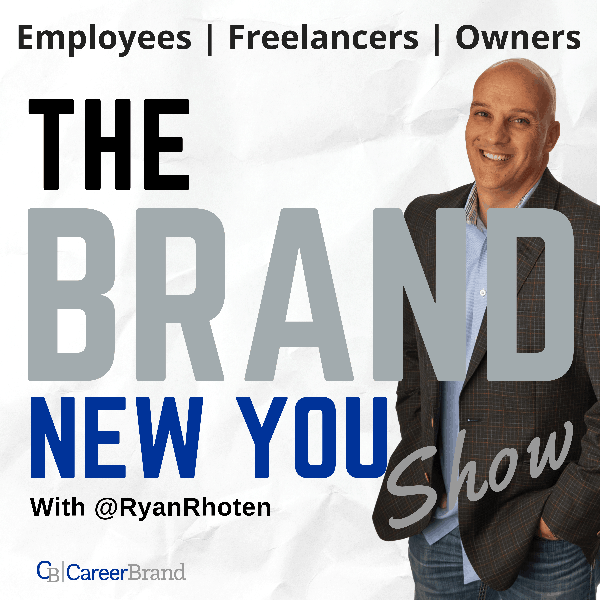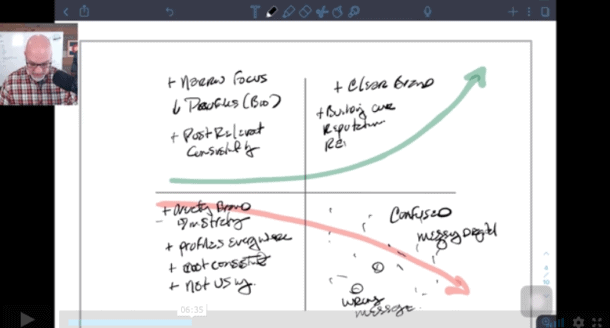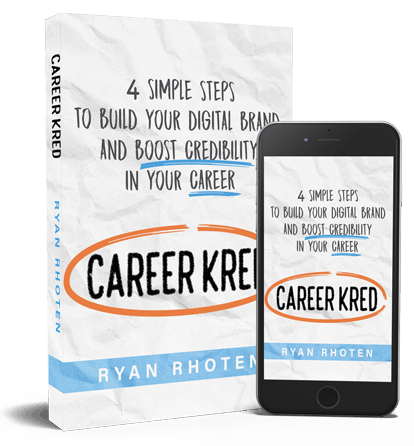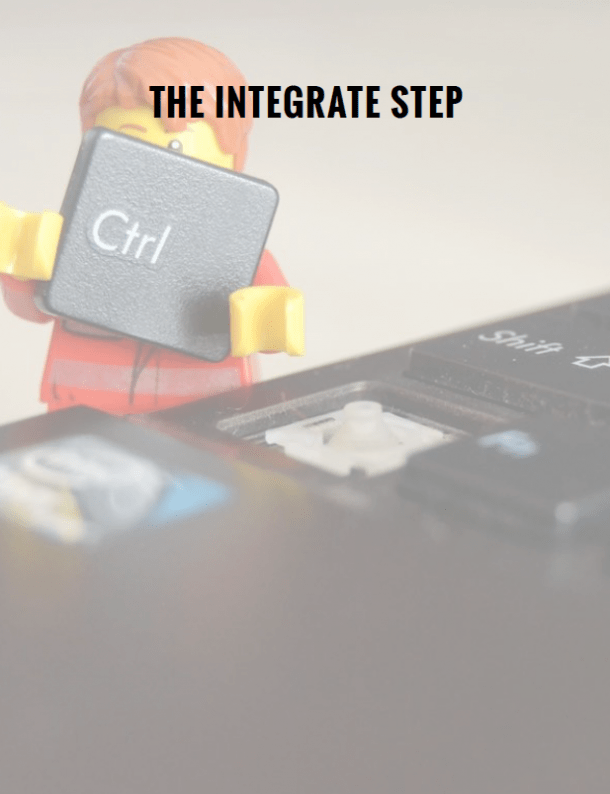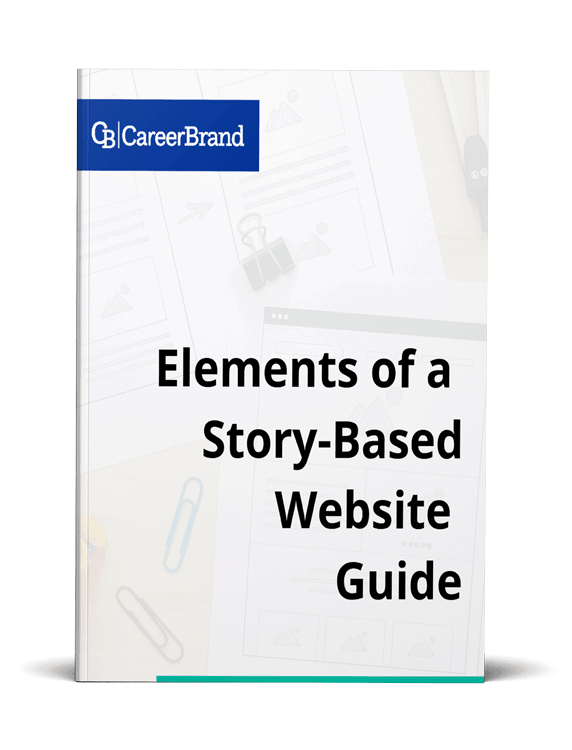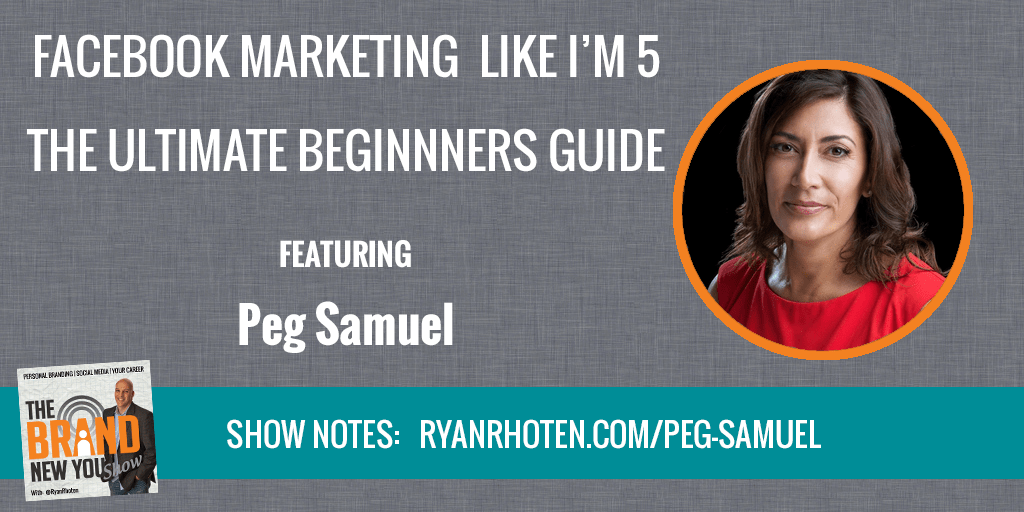
Peg Samuel is the Founder of SocialDivaMedia.com where she develops and executes integrated web strategies designed to bring businesses the viral power of social media and word-of-mouth marketing.
She has worked with big media brands such as Harry Connick Jr., the Grammy Awards, Harper’s Bazaar, InStyle and Vogue.
Peg Samuel is an adjunct professor at New York University, where she teaches about Media Relations both Present & Future within the Integrated Marketing Master’s degree Program
Peg is also a speaker, music producer and author of two books, “How to be a Social Diva” and her most recent book, “Facebook Marketing like I’m 5”.
FACEBOOK MARKETING LIKE I’M 5
Regular listeners to the show will know I have a love-hate relationship with Facebook. And to be totally transparent, it’s mostly hate.
However, after this discussion with Peg and previous guests Katrina Collier and Audra Knight, I believe it is time for me to start to embrace the platform.
Essentially being a newbie to Facebook, Peg and I started our discussion talking about Facebook terminology.
As Peg was describing what the “Wall” is, now called the timeline, I was able to immediately draw a comparison to Twitter, a platform I do happen to understand.
The timeline is similar to Twitter’s personal feed and the Facebook feed is the same as the Twitter’s news feed.
My guess is many people listening to today’s show will know this already so we moved quickly to the different types of pages within Facebook.
Facebook has essentially three different page types.
Facebook Personal Page:
The personal page is where all individuals start their Facebook journey, so chances are you have a personal page. This means you are limited to only having 5K friends and followers. Which seems like quite a lot to me.
Personal pages are generally used more for personal reasons and not necessarily for business. You also have to accept who you are friends with.
Facebook Public Figure Page:
Public figure pages used to be limited to celebrities or very well-known people but now in this digital-first age, everybody is their own personal brand, which opens up the possibility to use the public figure page even if you are not a celebrity.
The Public Figure Page does not limit you to a number of followers and you gain access to all of Facebook’s backend tools such as advertising and analytics.
Facebook Business Page:
The Business Page is just as it sounds, it is for businesses or business brands. So if you are a company this is the page you would choose. You gain access to all of FB’s backend tools as well.
Facebook does allow you to merge your personal page with a public figure page as long as they have like titles. This will allow you to not lose posts or followers if you decide to switch.
It can take up to 7 days for the merge to happen and Peg recommends backing up your page before you merge them.
GETTING PEOPLE TO YOUR FACEBOOK PAGE
In the book, Facebook Marketing Like I’m 5, Peg talks about the four pillars of building your FB strategy which includes, promoting and utilizing your page, identifying your target market, advertising and promoting your page.
All of the pillars revolve around content. The point of Facebook is to add value to your followers. Your page should not be just one big advertisement. Content allows you to add value to your target market.
Images and video tend to do particularly well on Facebook but Peg cautions making your video too long. If you can create a video that tells a story in just a couple of minutes that can be a very powerful piece of content.
A common question people ask about posting content to FB revolves around who will actually see it. In the early days of FB, if a brand posted content to their timeline there was a very good chance it would be seen by the majority of your followers.
However, as you could imagine this lead to a lot of content being posted with essentially no value. To combat this FB changed the way content was delivered and it essentially forced brands to pay for more “eyeballs”.
A typical post might be seen by 1 to 2% of your audience. By paying, FB will increase that percentage to as high as 30%. The goal of this change was to get back to value added content in your timeline.
Content that adds value has a greater chance of being liked, commented on and shared which are the behaviors FB wants to encourage. Interactions with your content will put your content on someone else timeline and increase the percentage of eyeballs that get to see it.
This means if you engage with the people who engage with you, it’s like free marketing.
Another question surrounding posting to FB is frequency, i.e. how often should you post. Peg advises as often as you feel is necessary for your audience but will still add value.
If you only have one valuable post a week in you, then one post it is. She does suggest that once you start posting to be consistent.
Peg also recommends using images when you post because FB weighs rich media posts heavier in their algorithm.
To make the images, even more, shareable you can put text on them, however, Facebook only allows for 20% text on any image.
You can Google Text Overlay to determine if you have met the 20% requirement if you are not sure.
ADVERTISING ON FACEBOOK
As you can imagine, Facebook wants to make it very easy for you to spend your advertising dollars with them. To this end, they have created a button that appears on your post labeled Boost.
Peg explained that boosting a post is not a free service. It is, instead a way for you to gain additional exposure for your post for a fee. It’s basically a quick way to advertise on Facebook.
You can boost a post for as little as $5 but keep in mind you get what you pay for and $5 won’t buy you that much reach.
Boosting a post, in my opinion, seems to be the gateway drug to full-blown Facebook advertising.
So I asked Peg, with boosting in play why advertise on FB? Basically boosting a post will only give you limited reach and targeting. With full-blown Facebook advertising, you gain the ability to really narrow your focus and target your ads.
The possibilities for targeting are endless.
Peg mentioned during our discussion this nebulous thing called a Pixel. A Pixel is a small piece of code that talks to Facebook when certain requirements have been met.
A pixel can tell Facebook a purchase or a sign up has been made from a particular ad set.
During the podcast, Peg Samuel and I discuss a specific example of how to implement Facebook advertising for a fictitious t-shirt campaign.
SOCIAL DIVA MEDIA
Social Diva Media is a boutique agency Peg Samuel founded to help clients unravel the “mysteries” surrounding social media. Peg helps her clients get their story out through social media channels.
Because she works with some high-profile clients, I asked Peg where she sees potential clients struggle the most with social media. Her answer surprised me but made sense once she walked me through her reasoning.
PEG SAMUEL WRAP
The Best ways to get in touch with you are
Web: socialmediadiva.com
Peg left us with the follow key Facebook tip.
“Engage. Engage with people. Do not set it and forget it. It’s Social Media.”
